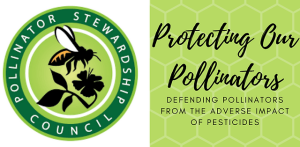Alan Harman
There has been no notable improvement in honey products adulterated with sugar or in terms of their freshness since tests in 2013, the Hong Kong Consumer Council says.
The council tested 45 honey samples – 35 general honey and 10 Manuka samples – for their product safety and general quality under international Codex standards.
The performance rating of each sample was a summation of their scores in product safety, general quality, the source of origin analysis and packaging claims.
There were considerable variations among the general honey samples, with 12 scoring the maximum five points and five samples scoring just two points or less.
It says it found potentially cancer-causing antibiotic residue in two samples.
One sample was found to have eight antibiotics including metronidazole which has been proven to be carcinogenic when tested on laboratory animals and this honey is no longer being sold.
The other sample contained two antibiotics including nitrofurans, a genotoxic carcinogen that may induce genetic mutation affecting male reproductive system.
Under Codex standards and regulations in mainland China, the European Union and the United States, antibiotic metronidazole and nitrofurans are not allowed to be fed to food-producing animals.
The council has referred its findings to the Center for Food Safety.
Other antibiotic residues detected in the two samples included sulfonamides and streptomycin.
In the EU and the US, the use of antibiotics in beekeeping is strictly regulated with Switzerland and the United Kingdom having established action limits for each antibiotic group. The council wants the Hong Kong government to do the same.
The tests also revealed quality issues in the honey with foreign sugars found in seven samples and the freshness of nine samples was less than satisfactory with some of the samples found to have fermented or have a change in smell.
Among the samples with foreign sugar added, the most serious cases had a level of adulteration as high as 13% to 85%. One sample sold as Centifloral Honey and labelled containing centifloral honey, fructose had a content of C4 plant sugar, which mainly comes from sweet corns and sugar cane syrup, of up to 85%.
The council also had 41 samples tested in Germany for country of origin.
That testing showed two labelled as from Germany turned out to be from West Mediterranean and South America, Central America and West Mediterranean respectively/ Another, labelled from Egypt was judged to have come from China.
In contrast, significant improvement was found in the Manuka samples with regard to claims in antibacterial activity and their actual measured performance. One Manuka honey sample priced at over HK$1,000 (US$127) was found to contain foreign sugars and trace amounts of pesticide residues.
Tests of the other nine showed the Unique Manuka Factor or Methyglyoxal antibacterial activity levels matched the values declared on the product packaging. This was a marked improvement from the 2013 findings when only nine of 15 samples measured up to the packaging claims.
Last month, the Centre for Food Safety said it found an antibiotic in a sample of bottled natural bee honey from Egypt. It contained an antibiotic, metronidazole, at a level of 75 parts per billion. The vendor was instructed it to stop selling the product.
There is no maximum residue level set for antibiotic and pesticide residues in honey in Hong Kong and the council suggests the government create guidelines for the honey manufacturing industry to follow to strengthen consumer health protection.









